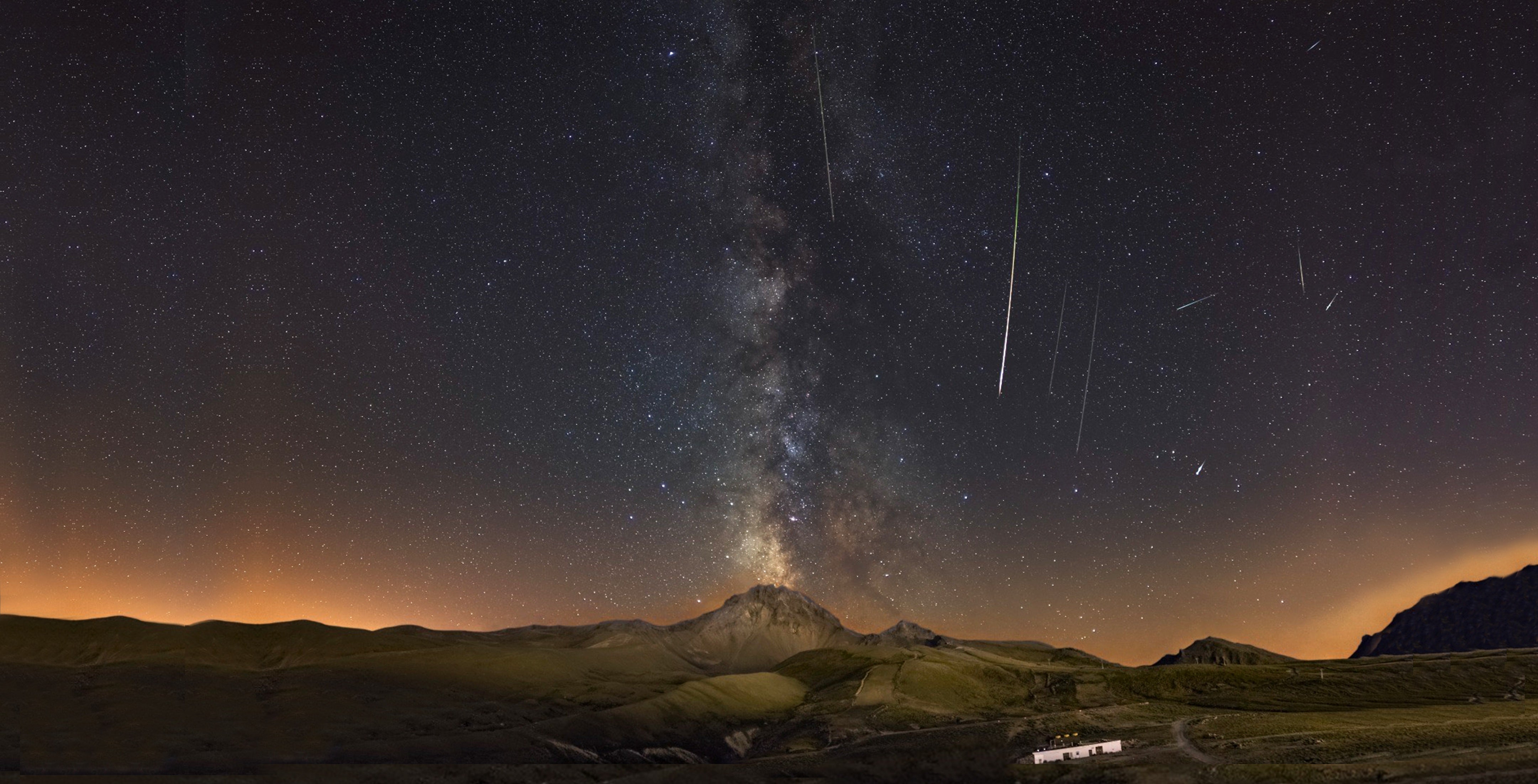
Merhaba! That’s Turkish for “hello.” After a week of encountering so many warm-hearted Turkish people, I was saying this word in my sleep.
My adventure began with 12 hours of travel from Milwaukee. When my feet touched Turkish soil in Kayseri, it finally felt official: I was going to observe the Perseids at Turkey’s annual meteor-observation festival on the slopes of the inactive volcano Mount Erciyes, amongst a myriad of locals and foreigners.
This extraordinary opportunity arose through Astronomy’s travel partner, Eclipse Traveler (ET). Traveling to Turkey for the Perseid meteor shower and learning about the region’s rich history and culture is something I recommend everyone to do at least once in their life.
I was picked up by ET’s experienced guide Mesut Pehlivan and our kind personal driver, Refik. When they asked if I was hungry for Turkish food, I had to admit that I’d been waiting to be asked that question since they first told me about the trip. We ate at the restaurant Taş Mekan and ordered nearly everything on the menu — not for the last time on this trip.
After completely filling up on food, we headed to Kayseri Erciyes A.Ş. Ski Resort. There, I was generously welcomed by Deputy of Kayseri Murat Cahit Cingi and General Manager Zafer Akşehirlioğlu, who gave me and Mesut a grand tour, explaining their exciting plans for sports and social activities throughout the year. We had a delicious break with five Turkish desserts at the restaurant H2650 (named after the altitude in meters), next to the gondolas on Hacılar Kapı (one of the slope trails). That’s also where night-sky enthusiasts would gather the next day to view the Perseids — known to locals as a “starfall.”
Afterwards we traveled to the exquisite boutique hotel Gesi Efkeriye Estates, owned by archaeologist and ET President Cengiz Aras. Throughout my stay in Kayseri, this historic establishment quickly felt like home, with family-like company from the guides and staff, and some of the best authentic homemade Turkish meals and desserts. I had to persuade my stomach to grow a stomach to take full advantage.
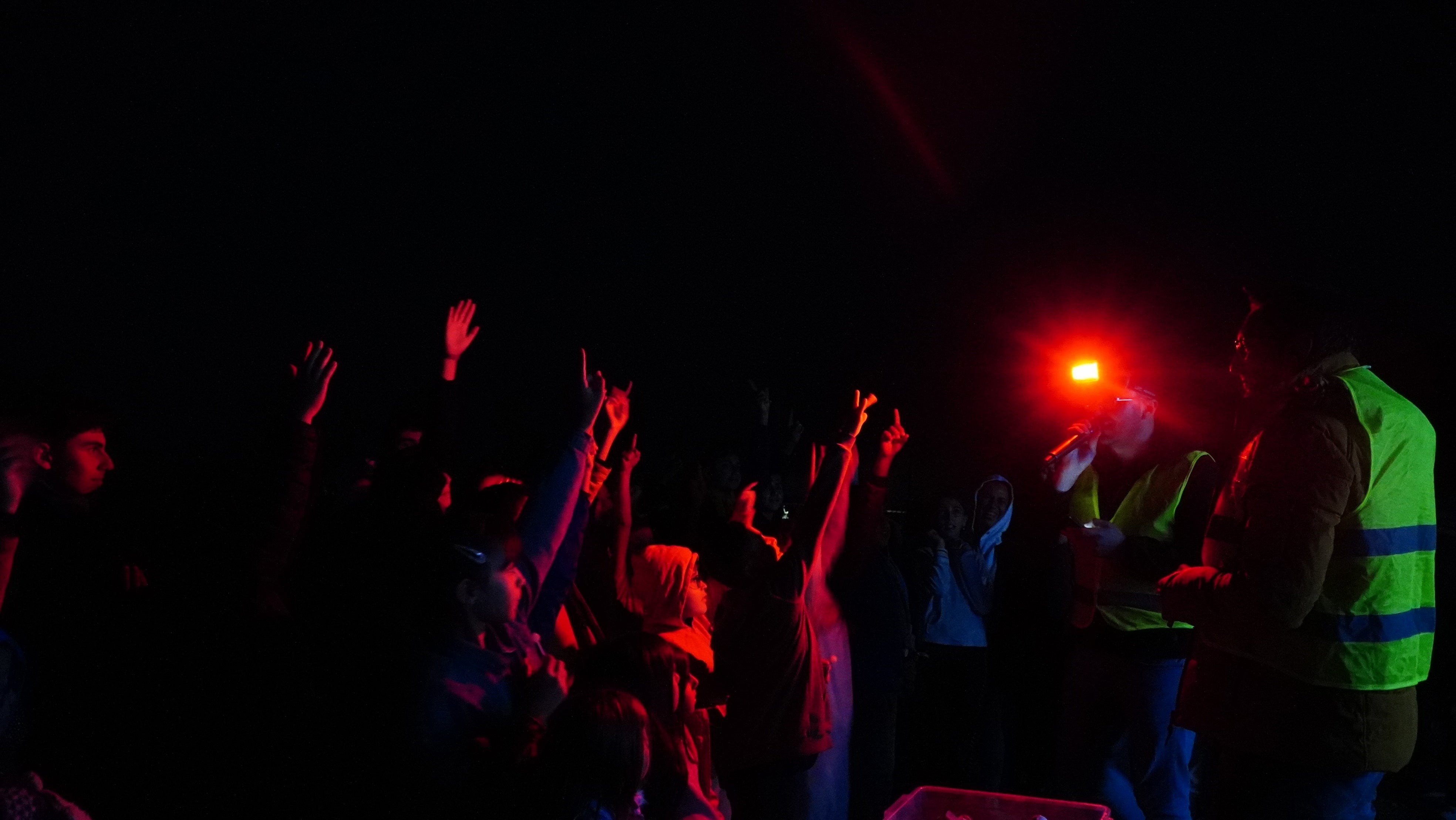
Credit: Erciyes A.Ş. Ski Resort
Perseids Day!
The next day, Cengiz hosted a lavish lunch at his hotel for me, Murat, a city mayor, and another Kayseri area official. The mayor kindly gifted me souvenir models of two famous Kayseri landmarks: Döner Kümbett (the Rotating Tomb) and Bürüngüz Camii (the mosque at the heart of the city).
Afterwards, Mesut and I visited the ancient site Kültepe-Kanesh, located at the foot of Mount Erciyes. It was the center of Assyrian trade in the third and second millennium b.c.e. Then we went to the city center to see a more modern way of living and have an early dinner before heading up the mountain for the starfall event.
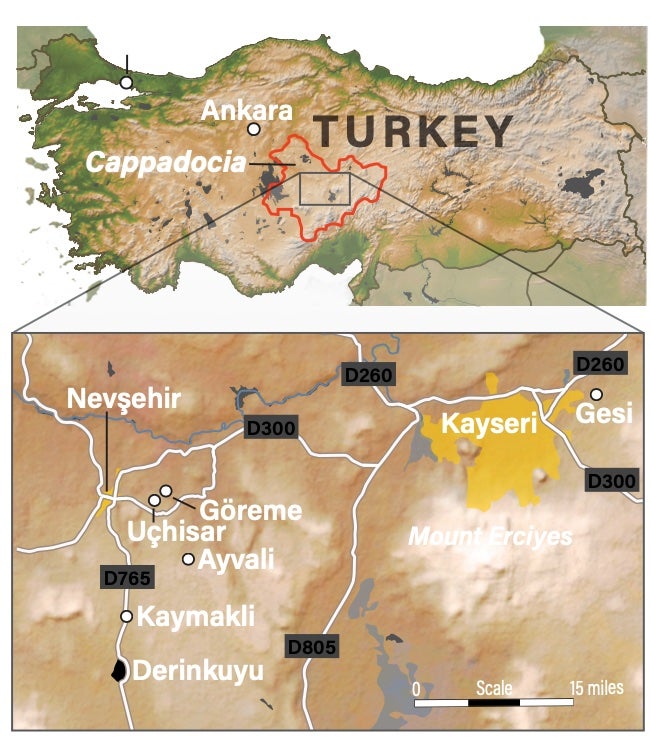
My heart was pounding with excitement as we rode the gondola lift up to the observing spot. The previous year, Mesut explained, the crowds were so big that arriving at the start time was too late to get in. So we got there about two hours in advance — and thank goodness we did! Once at the observing site, I quickly saw that many others had the same idea.
Before long, I was taking pictures of the sunset as its pastel hues became increasingly vibrant. I also met the event’s organizers from the Kayseri Science and Technology Center (STC). The crowd continued to swell; each time I looked around, there were 50 more people. About a hundred pictures later, I was surrounded by roughly 1,000 fellow observers. Like a mosaic, they came together beautifully to create a harmonious community, a crowd with one goal: to bask in the wonder and magic our cosmos have to offer.
Astronomical twilight passed and to kick off the night, the STC presenters called children forward to participate in a trivia game. They were asked questions like “How many planets are in our solar system?” or “Which galaxy is closest to us?” I could hear their little excited voices and see their silhouettes against the projection screen, jumping up and down with their arms waving around. If they answered correctly, they won a red light-up meteor toy. (I was gifted one, too.)
With not a single cloud in the sky, the night was chilly but perfect for observing. The Perseid meteors are debris left behind by Comet Swift-Tuttle (named after the discoverers) — which takes about 132 years to orbit the Sun. We see them every year because Earth passes the debris every year, and thus, they annually peak around the same time: The second week of August, you can find them in the constellation Perseus.
Astronomers estimate that against velvet-black skies, over 60 meteors per hour can be seen traveling at around 41 miles per second (66 kilometers per second). I easily saw dozens of Perseid meteors of all sizes! My eyes were a little too slow to notice a true distinction between meteor colors — but that just gives me even more of a reason to appreciate long-exposure photographs. There was one monstrous meteor I can still see clearly in my mind that spanned more than 10° in the sky. Without warning, I involuntarily pointed and yelled out, “Ah, there!” And I wasn’t the only one to do that throughout the night.
Although the words spoken around me were purely Turkish, the language of exhilaration was universal. With each passing meteor, I first heard excitement, immediately followed by exclamations either matching the energy because they had also seen it, or disappointment because they missed it. These heartfelt human moments made me smile ear to ear — and I had to laugh at the more dramatic reactions. This was easily one of my favorite moments of the trip.
As the night came to an end, I was interviewed by two different Turkish public broadcasters, one from Kayseri Metropolitan Municipality Erciyes A.Ş. and one from TRT World (an English-language Turkish channel). As we finally descended the mountain, I was shocked to pass hundreds of cars lined bumper to bumper. About 2,000 people were sitting outside their cars, looking up and enjoying the visual feast.
Friendly Turkish delights
Before Mesut left to return home, the two of us and one of Cengiz’s assistants, Ibrahim, took a light trek through Koramaz Vadisi, a rocky but lush 9-mile-long (15 km) valley. I snacked on chemical-free plums and walnuts (probably for the first time ever), plus natural spring water from Mount Erciyes. The incredibly cold water and towering poplar trees provided some welcome relief from the Sun.
After the hike, we took a brief detour to the home of Cengiz’s friend Mehmet Uzunok, who gave us a tour of the indoor/outdoor restaurant he’s building, and shared some of his home-grown blackberries. They were so incredibly sweet and juicy. His wife and children greeted us with Turkish coffee, which is some of the best coffee out there, if you ask me — it’s amazingly easy to drink black without tasting exceptionally bitter.
Around sunset, we returned to the hotel for dinner. This time it was my turn to cook! Fortunately for me, all I had to do was put pre-seasoned lamp chops on the grill and not dry them out. Beginners’ luck (or maybe natural talent!) made the meat come out nice and juicy. We paired it with grilled tomatoes, peppers, and bread, and everybody dug in until there was nothing left.
The following day, Cengiz showed me one location near the hotel with dozens of structures called pigeon lofts; they can also be found throughout the city. In the first millennium b.c.e., these little houses were used to collect pigeon droppings to then sell. It was one of the largest sources of income for the residents at the time.
I then had the best kebab at Hasiralti Kebab House, an established restaurant also owned by Mehmet. Afterwards, Cengiz, Refik, and I visited the Kayseri Archaeological Museum, where Cengiz gave an excellent and interesting explanation of the artifacts. The marble Hercules Sarcophagus left me speechless — it’s an excellent example of the human capability to create something extremely fluid and intricate out of something sharp and straight. This artifact depicts the 12 labors of Hercules through intense carving depth and great anatomical detail.
To wrap up the day, one of Cengiz’s long-time neighbors and friends hosted us for dinner with his family. This turned out to be the best meal I had on women, even though only the granddaughter knew English. All three of the women taught me Turkish formal and informal greetings. I absolutely loved it.
Cappadocian fairyland
After four days in Kayseri, we moved on to continue our adventures in the next region: Cappadocia, Turkey. If you want to go somewhere otherworldly and magical, Cappadocia is the answer. Throughout my three days there, we stayed at the Grand Cave Hotel — modern lodgings seamlessly merged with ancient structures — and wandered through spectacular landscapes. I constantly repeated to myself, “Did I die and enter utopia unknowingly?” The panoramic vistas seemed straight out of a fairytale; I could have stared at them for hours and not fully taken in all the details.
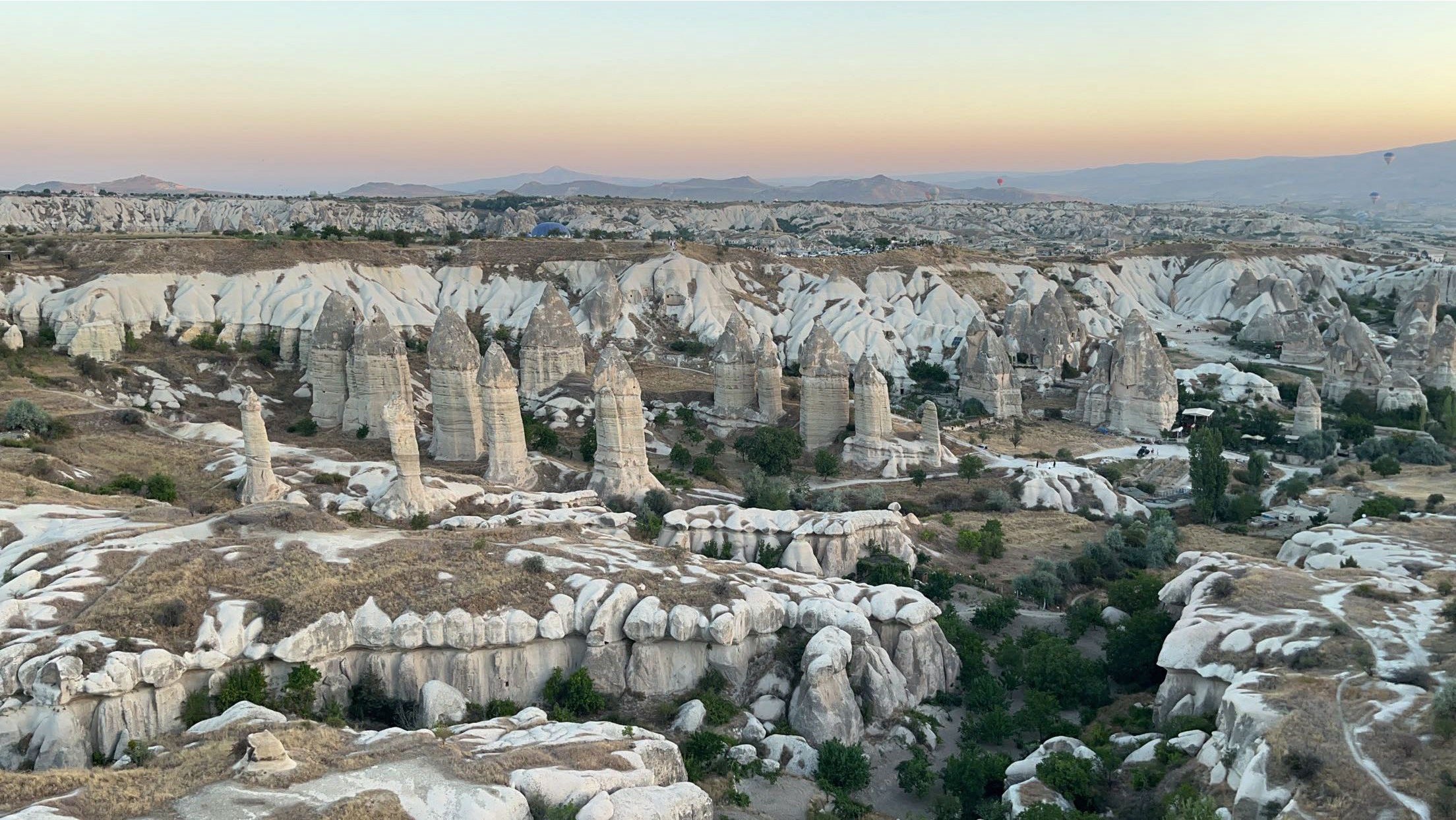
Around 60 million years ago, volcanic eruptions covered hectares of Turkish lands with lava. Cappadocia now boasts colorful rugged mountains, valleys, extinct volcanoes, and fairy chimneys — tall rock pillars with mushroomlike caps formed by the ancient lava, ash, and basalt, which is then eroded by weathering — showcasing nature’s superb engineering.
The same soft rock from which fairy chimneys form also served as a sanctuary for past civilizations escaping religious persecution. About 2,000 years ago, refugees carved seemingly infinite labyrinths of houses, churches, and barns inside cone-shaped caves. At rock-cut complexes at the Dragon Church in Soğnali and the Open-Air Museum in Göreme, I could see beautiful frescoes, despite people of conflicting faiths destroying the faces. And a visit to the Kaymakli Underground City left me speechless at the ingenuity of these civilizations. We could access four out of the eight stories of this preserved city, which made it much easier to understand how these places could hold animals and thousands of people — every room led to two to five other rooms.
Apart from the more educational activities, we visited Kocabağ Winery and tasted award-winning wines, and saw a carpet-making demonstration at Yüksel Carpet and a pottery demonstration at Bei Kaya, a lovely pottery shop owned by two sisters.
Everlasting memories
Returning to the theme of the trip, I had a second opportunity to see the Perseids. Cengiz’s friend Ziah kindly invited us and some others to stargaze at an isolated spot in the valleys, away from light pollution. We ate savory Turkish sausage and paired it with tomatoes and homemade cheese.
At one point in the night, two of the friends started singing and playing Turkish music with an oud and daf (a type of guitar and drum). As the music was playing and I looked up at the Milky Way and the star-filled sky, I teared up, overwhelmed with gratitude and happiness. Good thing it was so dark!
This happened again the next night when Ziah hosted us and others for a dinner. Both nights were filled with soul-feeding moments. For our last night in Cappadocia, Cengiz, Refik, and I went to a spectacular Turkish cultural show at the nightclub cave Yasar Baba.
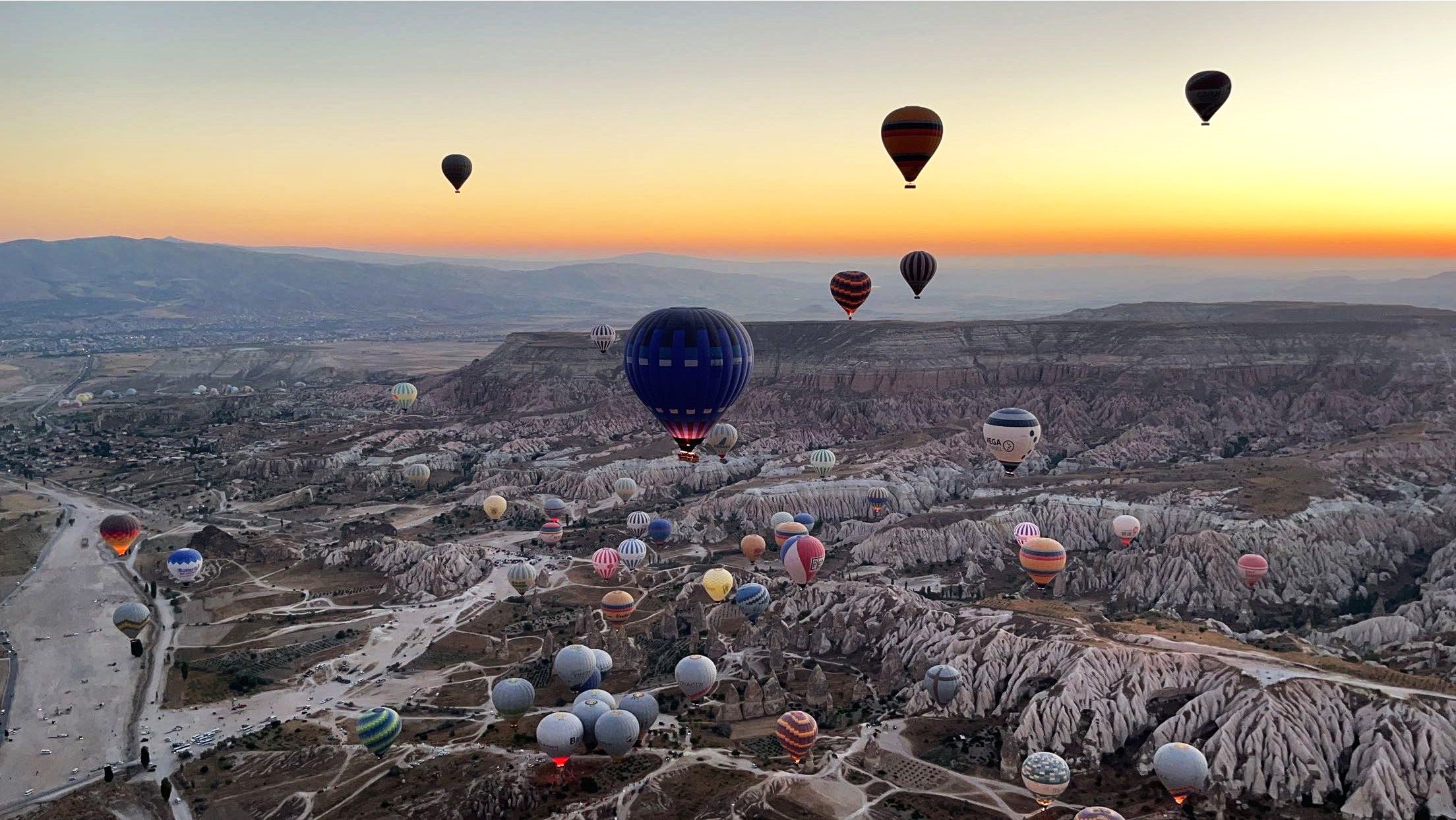
High-flying finale
And what better way to start my last day than to ride a hot-air balloon over the scenic landscape? I was picked up from our cave hotel at 4 a.m. by Voyager Balloons. The company offered a quick breakfast, then took us to our balloon.
As our pilot, Jim, took us over the caves, valleys, and fairy chimneys, a feeling of enchantment washed over me. I was already dazed by the ethereal landscape when viewing it from the ground, but now at a higher altitude? I was hypnotized. As the balloon gently rose and fell, we witnessed sunrise more than once, accompanied by the iridescent colors of the sky and landscape. It was the fastest 90 minutes of my life — though it pushed the limits of my phone’s storage.
Once we touched land again, we honored a tradition dating to the 18th-century French balloonists: celebrating with a glass of champagne. We also received official passenger certificates as mementos, but I don’t think it’s possible to ever forget any of it.
I loved absolutely every little detail of this trip. Each time I had to say goodbye to somebody, I ended our conversation by saying, “Don’t worry, I’ll be back. This won’t be the last time you’ll be seeing me.” And I meant every word.
Turkey took me by beautiful surprise, filled with unexpected delights. How could I not go back and try to persuade others to experience what I was so fortunate to experience?









